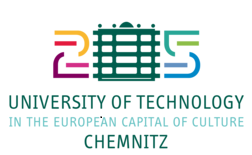Evaluation of the Effect of the Training Program Developed for Teachers Working with Students with Dysgraphia on Knowledge Competence of Teachers
DOI:
https://doi.org/10.71514/jssal/2022.59Keywords:
Dysgraphia, teacher education program, writing difficulties, curriculum development.Abstract
This study aimed to evaluate the effect of teacher training program developed on dysgraphia concerning teachers' knowledge proficiency. The study was organized according to the mixed method. There is no significant difference between the pre-test knowledge competencies of the experimental group teachers and the control group participants, where the training program developed for teachers working with dysgraphia students was applied. There is a significant difference in favor of the experimental group between the post-test knowledge competencies of the participants in the experimental group and the control group, where the training program developed for teachers working with dysgraphia students was applied. There is a significant difference in favor of the experimental group between the retention test scores of the experimental group participants and the control group participants, where the training program developed for teachers working with dysgraphia students was applied. It has been observed that teachers make statements consistent with the literature to a large extent, both when identifying the students with dysgraphia in their classrooms and when explaining the developmental characteristics of students with dysgraphia.
Downloads
References
Alharbi, A., Hott, B. L., Jones, B. A. & Henry, H. R. (2015). An evidence-based analysis of self-regulated strategy development writing interventions for students with specific learning disabilities. Journal of Special Education and Rehabilitation, 16(1-2), 55-67.
Ali Munshi, A.M. (2014). Knowledge of Diagnosis and Management of ADHD among Female Teachers in Saudi Arabia. Int. J. Med Sci. Public Health. 4:444–451.
Ambika, A., Vijayasamundeeswari, P. & David, A. (2019). Effectiveness of planned teaching program among primary school teachers regarding awareness of learning disabilities in children. Journal of family medicine and primary care, 8(12), 3845–3849. https://doi.org/10.4103/jfmpc.jfmpc_722_19
American Psychiatric Association (1994). Diagnostic and statistical manual of mental disorders. Fourth edition (DSM-IV). Washington: American Psychiatric Association.
Arı, A. (2011). Bloom’un gözden geçirilmiş bilişsel alan taksonomisinin Türkiye’de ve uluslararası alanda kabul görme durumu. Kuram ve Uygulamada Eğitim Bilimleri, 11(2), 749-772.
Barkley, R.A. (2015). Attention-Deficit Hyperactivity Disorder: A Handbook for Diagnosis and Treatment. Guilford Publications; New York, NY, USA.
Başar, M. & Alkan, G. (2020). Disgrafili Öğrencilerin Yazma Hatalarının İncelenmesi. Milli Eğitim Dergisi, 49 (227), 371-388. Retrieved from https://dergipark.org.tr/en/pub/milliegitim/issue/56322/703398
Berninger, V., Wolf, W. & Beverly, J. (2009). Teaching students with dyslexia and dysgraphia: Lessons from teaching and science. Paul H. Brooks Publishing Co.
Berninger, V. W. & Chanquoy, L. (2012). What writing is and how it changes across early and middle childhood development: A multidisciplinary perspective. In E. L.
Biotteau, M., Danna, J., Baudou, É., Puyjarinet, F., Velay, J. L., Albaret, J. M. & Chaix, Y. (2019). Developmental coordination disorder and dysgraphia: signs and symptoms, diagnosis, and rehabilitation. Neuropsychiatric disease and treatment, 15, 1873–1885. https://doi.org/10.2147/NDT.S120514.
Brannen, J. (2005). Mıxed Methods Research: A Discussion Paper, Institute of Education, University of London.
Chung, P. J., Patel, D. R. & Nizami, I. (2020). Disorder of written expression and dysgraphia: definition, diagnosis, and management. Translational Pediatrics, 9(Suppl 1), S46–S54. https://doi.org/10.21037/tp.2019.11.01
Cimera, R. E. (2007). Learning disabilities: What are they? Helping teachers and parents understand the characteristics. Lanham, Maryland: Rowman & Littlefield Education.
Cortiella, C. (2006). What Parents of Students with Disabilities Need to Know and Do. National Center on Educational Outcomes, University of Minnesota.
Crouch, A. L. & Jakubecy, J. J. (2007). Dysgraphia: How It Affects A Student’s Performance and What Can Be Done About It. TEACHING Exceptional Children Plus, 3(3).
Çakıroğlu, O. (2018). Özel öğrenme güçlüğüne giriş. M. A. Melekoğlu & U. Sak
(Ed.), Öğrenme güçlüğü ve özel yetenek, (s. 2-21). Ankara: Pegem.
DeFries, J. C., Fulker, D. W. & LaBuda, M. C. (1987). Evidence for a genetic etiology in reading disability of twins. Nature, 329, 537-539
Doğan, H. (2012). Özel öğrenme güçlüğü riski taşıyan 5-6 yaş çocukları için uygulanan erken müdahale eğitim programının etkisinin incelenmesi. (Yayınlanmamış Doktora tezi). Marmara Üniversitesi, Eğitim Bilimleri Enstitüsü İstanbul.
DSM- V Tanı Ölçütleri Başvuru Kitabı (2013). Amerikan Psikiyatri Birliği. (H. Köroğlu, Çev.). Ankara: HYB.
Dunn M., Zajic, M., C. & Berninger, V. (2020). The self in self-regulated writing of fourth to ninth graders with dysgraphia, International Journal of School & Educational Psychology. 10.1080/21683603.2020.1721384
Dunn, M. (2013). Using Art Media During Prewriting: Helping Students with Dysgraphia Manage Idea Generation Before Encoding Text, Exceptionality, 21:4, 224-237. 10.1080/09362835.2013.802234.
Ediger, M. (2002). Assessing handwriting achievement. Reading Improvement, 39, 103-110.
Forehand, M. (2005). Bloom’s taxonomy: Orginal and revised. In Emerging Perspectives on Learning, Teaching, and Technology (e-Book). From http://epltt.coe.uga.edu/index.php?title=Bloom%27s_Taxonomy
George, D. & Mallery, M. (2010). SPSS for Windows Step by Step: A Simple Guide and Reference, 17.0 update (10th ed.). Boston: Pearson.
Gersten, R., Fuchs, L. S., Williams, J. P. & Baker, S. (2001). Teaching reading comprehension strategies to students with learning disabilities: A review of research. Review of educational research, 71(2), 279-320.
Glesne, C. (2013). Nitel araştırmaya giriş. (Çeviri Editörleri: Ali Ersoy ve Pelin Yalçınoğlu). Ankara: Anı: Yayıncılık.
Graham, S., Harris, K. R. & Larsen, L. (2001). Prevention and intervention of writing difficulties for students with learning disabilities. Learning Disabilities Research ve Practice, 16(2), 74-84.
Graham S. & Harris, K. R. (2003). Students with learning disabilities and the process of writing: A meta-analysis of SRSD studies. New York, NY: Guilford.
Graham S., & Perin D. (2007). What we know, what we still need to know: Teaching adolescents to write. Scientific Studies of Reading, 11, 313–335.
Hallahan, D. P. & Mercer, C. D. (2001). Learning disabilities: Historical perspectives, executive summary. Educational Resource Information Center (ERIC), ERIC Number: ED458756.
Harris, G. M., Little, S. G. & Akin-Little, A. (2017). Video self-modeling as an intervention for remediating dysgraphia in children with autism spectrum disorders. Australian Journal of Learning Difficulties, 22(2), 153-170. doi:10.1080/19404158.2017.1397525
Hebert, M., Kearns, D. M., Hayes, J. B., Bazis, P. & Cooper, S. (2018). Why Children with Dyslexia Struggle with Writing and How to Help Them. Language, speech, and hearing services in schools, 49(4), 843–863. https://doi.org/10.1044/2018_LSHSS-DYSLC-18-0024.
Hopcan, S. & Tokel, S.T. (2021). Exploring the effectiveness of a mobile writing application for supporting handwriting acquisition of students with dysgraphia. Educ Inf Technol 26, 3967–4002 https://doi.org/10.1007/s10639-021-10440-3
IDEA, (2004). Individuals with disabilities education act, 20 U.S.C. § 1400.
Integra, (2009). A Handbook on Learning Disabilities. Ontario’s Ministry of Children and Youth Services.
Kızılkaya, H. (2021). The Effectıveness of Traınıng Program Developed for Teachers Workıng wıth Dyslexıc Students on Theır Competencıes. [Unpublished doctoral dissertation]: University of Necmettin Erbakan, Turkey.
Korkmazlar, O.Ü. (2003). Öğrenme Bozukluğu ve Özel Eğitim. Farklı Gelişen Çocuklar Ed: Adnan Kulaksızoğlu. İstanbul: Epsilon Yayıncılık.
Korkmazlar, Ü. (2016). Öğrenme bozukluğu ve özel eğitim. A. Kulaksızoğlu (Ed.), Farklı gelişen çocuklar içinde (s. 105-122). Ankara: Nobel.
Kushki, A., Schwellnus, H., Ilyas, F. & Chau, T. (2011). Changes in kinetics and kinematics of handwriting during a prolonged writing task in children with and without dysgraphia. Research in Developmental Disabilities, 32, 1058–1064. http://dx.doi.org/10.1016/j.ridd.2011.01.026
MEB. (2017). Öğretmenlik Mesleği Genel Yeterlilikleri. Ankara: Millî Eğitim Bakanlığı Öğretmen Yetiştirme ve Geliştirme Genel Müdürlüğü, https://oygm.meb.gov.tr/meb_iys_dosyalar/2017_12/11115355_YYRETMENLYK_MESLEYY_GENEL_YETERLYKLERY.pdf
Meese, R. L. (2001). Teaching learners with mild disabilities: Integrating research and practice (2nd ed.). Belmont, CA: Wadsworth.
Melekoğlu, M. A. & Çakıroğlu, O. (2015). Özel öğrenme güçlüğü olan çocuklar. Ankara: Vize Yayıncılık. ISBN: 978-605-4551-98-9.
Merrill, M.D. (2002). First-principles of instruction. Educational Technology Research & Development, 50(3), 43–59.
McBride, C. & Rui En Cheah, Z. (2021). The “Write Stuff”: What Do We Know About Developmental Dysgraphia? International Journal for Research in Learning Disabilities, 5(1), 3-12. https://doi.org/10.28987/ijrld.5.1.3
Mishra, P. & Koehler, M. (2009). Too Cool for School? No Way! Using the TPACK Framework: You Can Have Your Hot Tools and Teach with Them, too. Learning and Leading with Technology, 36(7) p14-18.
Moldavsky, M. & Sayal, K. (2013). Knowledge and attitudes about attention-deficit/hyperactivity disorder (ADHD) and its treatment: The views of children, adolescents, parents, teachers, and healthcare professionals. Curr. Psychiatry Rep. 15:377. 10.1007/s11920-013-0377-0.
Özçivit Asfuroğlu, B. & Fidan, S. T. (2016). Özgül öğrenme güçlüğü. Osmangazi Tıp Dergisi,38 (Özel Sayı 1), 49-54.
Özkardeş, O. G. (2013). Türkiye’de Özel Öğrenme Güçlüğüne İlişkin Yapılan Araştırmaların Betimsel Analizi.Boğaziçi Üniversitesi Eğitim Dergisi, 30(2).
Polat, S. & Turan, F. (2020). Analysis of the Objectives and Teacher Practices in Preschool Curriculum in Terms of Revised Bloom’s Taxonomy. International Journal of Social, Political and Economic Research, 7(2), 292-310. https://doi.org/10.46291/IJOSPERvol7iss2pp292-310
Reid, G. (2009). Dyslexia a Practitioner’s Handbook Fourth Edition. Singapore: Wiley Blackwell.
Richards, R. (1999). The source for dyslexia and dysgraphia. East Moline, IL: LinguiSystems.
Rogers L. A. & Graham S. (2008). A meta-analysis of single-subject design writing intervention research. Journal of Educational Psychology, 100, 879–906. https://doi.org/10.1037/0022-0663.100.4.879
Rosenblum, S. (2018). Inter-relationships between objective handwriting features and executive control among children with developmental dysgraphia. PloS one, 13(4). https://doi.org/10.1371/journal.pone.0196098
Rosenblum, S., Aloni, T. & Josman N. (2010). Relationships between handwriting performance and organizational abilities among children with and without dysgraphia: a preliminary study. Res Dev Disabil., 31, pp. 502-509
Rubin, N. & Henderson, S. E. (2007). Two Sides of the Same Coin: Variations in Teaching Methods and Failure to Learn to Write. British Journal of Special Education, 9(4), 17–24. https://doi.org/10.1111/j.1467-8578.1982.tb00576.x
Sarı, H. (2013). Özel Eğitim Politikamız: Geçmişten Geleceğe Bakış, ELMIS-ER 2013 Uluslararası Özel Eğitim Kongresi, Akşehir, Konya
Sarı, H. (2004). An analysis of burnout and job satisfaction among Turkish special school headteachers and teachers, and the factors affecting their burnout and job satisfaction. Educational Studies, 30(3), 291–306. https://doi.org/10.1080/0305569042000224233
Seema Menon, K.P (2016). Awareness on Learning Disabilities among Elementary School Teachers. Asian Journal of Education and Training, 2(2): 78-83.
Sciutto, M.J., Terjesen, M.D., Kučerová, A., Michalová, Z., Schmiedeler, S., Antonopoulou, K., Shaker, N.Z., Lee, J.-Y., Alkahtani, K. & Drake, B. (2016). Cross-national comparisons of teachers’ knowledge and misconceptions of ADHD. Int. Perspect. Psychol. Res. Pract. Consult. 5:34. 10.1037/ipp0000045.
Sharma, M. (2020). Mathematics for all. Mathematics education workshop series at Framingham State University. Mathematics Education Workshop Series.
Smits-Engelsman, B., Vinçon, S., Blank, R, et al. (2018). Evaluating the evidence for motor-based interventions in developmental coordination disorder: a systematic review and meta-analysis. Res Dev Disabil. 74:72–102. 10.1016/j.ridd.2018.01.002
Thiel, L., K. Sage & P. Conroy. (2016). Comparing uni-modal and multi-modal therapies for improving writing in acquired dysgraphia after stroke. Neuropsychological Rehabilitation, 26(3): p. 345-373.
Türnüklü, D. (2000). Eğitimbilim Araştırmalarında Etkin Olarak Kullanılabilecek Nitel Bir Araştırma Tekniği: Görüşme. Kuram ve Uygulamada Eğitim Yönetimi, 24 (24), 543-559.
Uysal, Z. (2013). Özel Öğrenme Güçlüğü Öğretmenler İçin Rehber. Beşiktaş ve Rehberlik Araştırma Merkezi.
Downloads
Published
How to Cite
Issue
Section
License
Copyright (c) 2022 Metin Buğday and Hakan Sarı

This work is licensed under a Creative Commons Attribution-NonCommercial 4.0 International License.
The work is made available under the terms of the Public Offer and the Creative Commons Attribution 4.0 International License (CC BY 4.0). This license allows anyone to reproduce, distribute, and adapt the material in any medium or format, including for commercial purposes, provided that proper credit is given to the creator(s) and the original source.












